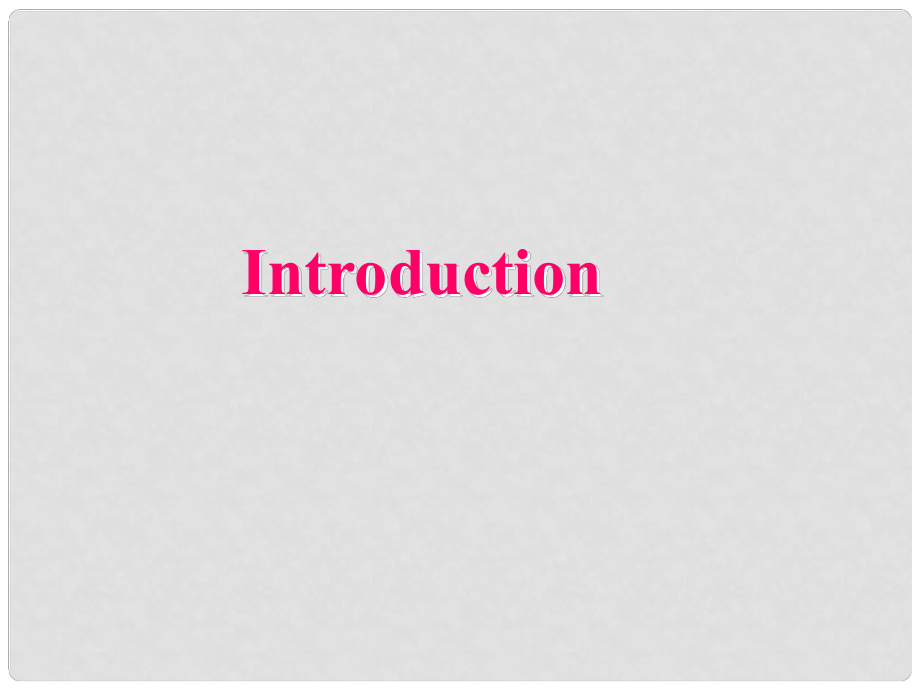《高中英語(yǔ) Module 3 Introduction課件 外研版必修4》由會(huì)員分享���,可在線閱讀���,更多相關(guān)《高中英語(yǔ) Module 3 Introduction課件 外研版必修4(24頁(yè)珍藏版)》請(qǐng)?jiān)谘b配圖網(wǎng)上搜索。
1���、IntroductionNow match the verbs in the box with the pictures: point shake smile wave point wave smile shakegiggle frownpull a long facehang ones head shrug ones shoulderShrug ones shoulderembracepoint point to 和和point at 都含有都含有“指著指著”的意思的意思, 兩者一般可以相互換用兩者一般可以相互換用���。The teacher is pointing at (to) the ma
2���、p on the wall. 老師指著墻上的地圖老師指著墻上的地圖。但主語(yǔ)是事物時(shí)但主語(yǔ)是事物時(shí), 一般用一般用point to作作謂語(yǔ)謂語(yǔ)���。point at可以分開(kāi)使用可以分開(kāi)使用, 即即point 后直后直接跟名詞或代詞作賓語(yǔ)接跟名詞或代詞作賓語(yǔ), 再跟介詞再跟介詞at 表示方向表示方向, 意為意為“把把指向指向”, 而而point to 卻不得分開(kāi)使用���。卻不得分開(kāi)使用���。 The soldier pointed his gun at the doctor. 士兵用槍指著醫(yī)生���。士兵用槍指著醫(yī)生。point out 意為意為“指出指出”, 其中其中out是副是副詞���。如果它后面的賓語(yǔ)是代詞詞���。如
3、果它后面的賓語(yǔ)是代詞, 則必須則必須把該賓語(yǔ)放在把該賓語(yǔ)放在out之前���。之前���。 Luckily the man knew Mr. Green and pointed him out to us. 幸好這個(gè)人認(rèn)識(shí)格林先生幸好這個(gè)人認(rèn)識(shí)格林先生, 于是便把他于是便把他指給我們看���。指給我們看。point out 后面還可以接賓語(yǔ)從句���。后面還可以接賓語(yǔ)從句���。 Please point out where I was wrong. Look at the pictures and guess what the people are doing.pointwavesmileshake 1. The two
4、 youths are talking. The boy is _ the way.2. The lady is _ her hand, she is likely to say “goodbye” to somebody.3. The white men is _, maybe he is welcoming the black man.4. The two middle-aged men are _ hands, perhaps they are greeting.pointingwavingsmilingshakingSay what you do when you Example: b
5���、e introduced to someone. I shake hands and say, “Pleased to meet you.”1. meet a friendI shake hands and say, “ Pleased to meet you.”2. show someone the way3. see a friend in the distance4. enter a friends houseI point in the direction they must go. I wave my hand.I shake hands and say, “Hello, pleas
6���、ed to see you.”5. say yes 6. say no 7. say who? Me?I nod my head up and down.I shake my head from side to side. I point to myself and put on a surprised expression. 1. How much do you communicate with your body? A. Not at all B. Not much C. A lot D. Perhaps more than I think. E. Perhaps more than with words. 2. Can you give reasons for your choice (s)? Read and answer the questions. Thank you!
 高中英語(yǔ) Module 3 Introduction課件 外研版必修4
高中英語(yǔ) Module 3 Introduction課件 外研版必修4

